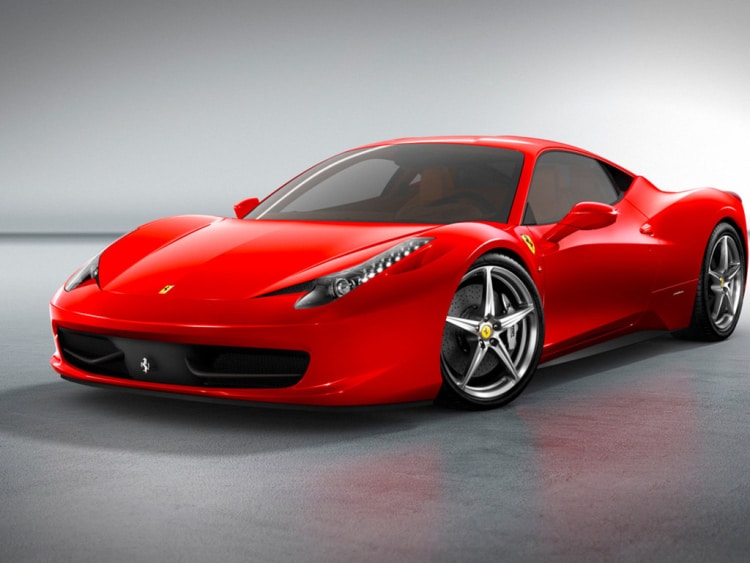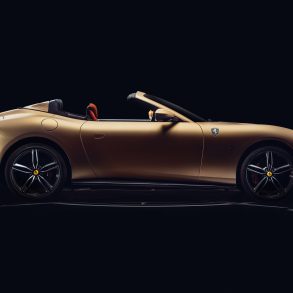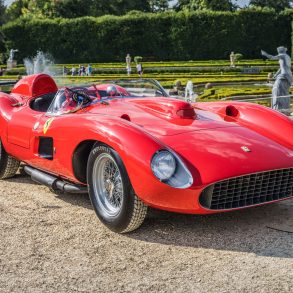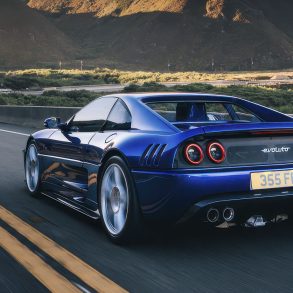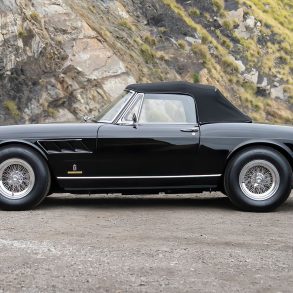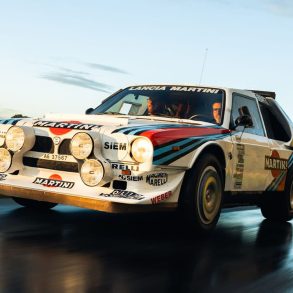When it entered the supercar world in 2009, the Ferrari 458 Italia eclipsed both its competition and its predecessors, establishing itself as a new standard for the V8-powered sports cars. It was as angry as the Enzo, blisteringly fast and drop-dead gorgeous. Fast forward ten years, the 458 is a second-hand Ferrari you could get your hands on, and it’s really the one you should too.
What made it special more than a decade ago? How did it influence the Ferrari we know today, and what makes it desirable as a certain future collector car? We’re here to find out!
Background
The 458 Italia followed the bloodline of the V8-powered Cavallini’s, the 308, 348, 355, and the 360 Modena but shared most of its DNA with its direct ascendant, the F430.
The 360 Modena and the F430 were two cars that brought Ferrari to the 21st century by implementing modern construction and development processes while also borrowing crucial technology from the Formula 1 paddocks.

With that in mind, the 360 Modena was the first Ferrari to use aluminum chassis after decades of steel tubular space frames. It was also the last car from Maranello to sport a mid-mounted Dino V8 as the F430 brought the F136 V8.
The so-called Ferrari-Maserati V8 was a modern powerhouse Ferrari needed as the new foundation for future development. Moreover, both the 360 and the F430 utilized F1 automated manual gearboxes, and the latter introduced the E-Diff, both technologies lifted from Ferrari’s dominant era in Formula 1. The car to succeed them just needed to have more.
Development
Rapid progress in technology meant that the imminent successor had a goal to surmount the F430 in all aspects and position itself as the quintessential Ferrari V8 sports car for the next decade.
During the F430’s production span, the market’s appetites have changed so much that the car replacing it needed to be radically different, more engaging to drive and more exciting to look at.

Traditionally, Ferrari looked for a new design at Pininfarina while refining the proven mid-mounted V8 formula in-house. The new daring looks were executed by studio Pininfarina and Donato Coco, an ex-Citroën designer who recently left Ferrari to become a chief designer at Lotus.
Coco penned the flowing body following the assistance from Pininfarina, creating an aerodynamic silhouette with a radically different front fascia and side profile. Looking at its main character lines, the new car had more to do with flagship cars of the recent past than its direct predecessors, marking the beginning of a new era for V8 Ferraris.
Meanwhile, the engineers in Maranello made sure to raise the bar in every aspect of the new go-to Cavallino, making it amicable for ones buying it as a costly accessory while still catering to customers who knew how to extract every drop of the car’s potential on the tracks.

The 458 Italia debuted at the 2009 Frankfurt Motor Show, and it was instantly clear that it was a big step forward for Ferrari and the whole supercar world. Soon after, the car met universal praise from the motoring media, unanimously calling it the greatest mid-engined V8 Ferrari and a huge leap compared to the F430.
In 2011, the 458 Italia got an open-top version and finally, in 2013, the all-out Ferrari 458 Speciale made it to the market as the ultimate version of the car. The speciale boasted upgrades all-around and was available both as the coupé and the convertible Aperta variant.
Returning to the tradition of naming its mid-engined V8 cars after the displacement, the 458 Italia got its name from a 4.5-liter F136 V8, an increase over the F430’s 4.3-liter powerhouse.
Chassis
Much like its predecessor, the F430, Ferrari 458 Italia was built around an aluminum subframe developed and produced by Alcoa. The American company is known as one of the largest traders and producers of aluminum, and it started collaborating with Ferrari on the 360 Modena.
By 2005, the two businesses formed a closer bond, with Alcoa opening a factory in Maranello’s neighboring Modena.

That being said, Alcoa and Ferrari perfected the flat floor aluminum spaceframe design on the third jointly developed product.
The new chassis was lighter and stiffer than its predecessors, making the 458 an ideal foundation for all further betterment the 458 promised and, more importantly, delivered.
Engine and Transmission
The powerhouse of the 458 Italia was an evolution of the F136 V8 named F136 FB.
Ferrari increased the displacement of the longitudinally-mounted all-aluminum 90° V8 to 4.5 liters, extracting 570 horsepower at screaming 9000 RPM and 398 lb-ft torque peaking at 6000 RPM with an excess of 80% of it available from as low as 3250 RPM.

With such a potent V8, the 458 Italia could accelerate from 0 to 60 MPH in 3.4 seconds and achieve a top speed of 202 MPH. The 458 Spider had the same power output, albeit a slightly lower top speed of 198 MPH due to a slight weight increase.
For the 458 Speciale, virtuous engineers upped the power of the 4.5-liter F136 V8 to 605 rampant horses at 9,000 RPM and 398 lb-ft of torque, creating the most powerful naturally aspirated V8 ever built at Maranello. When introduced, the engine codenamed F136 FL became the naturally aspirated V8 with the biggest specific output, 135 horsepower per liter, another groundbreaking feat for the Speciale.
These numbers translated to incredible performance. The 0 to 60 sprint took just 3 seconds, and the 458 Speciale achieved a record lap time at Fiorano at 1:23.5. To put it into perspective, the Ferrari Enzo posted a time of 1:24.90 in 2003. Ten years later, a special version of the V8-powered entry-level Ferrari drove the same circuit faster than the V12-powered flagship. That’s what we call a decade of pure progress!

One of the main reasons for the phenomenal performance of the 458 range was a new-gen transmission, the Getrag dual-clutch F1 gearbox. The 7-speed automatic was the only available unit in both the 458 Italia and the 458 Speciale, enabling lightning-quick gear changes with minimized lag associated with even the most advanced single-clutch automatic gearboxes.
The final drivetrain improvement came in the form of E-Diff 3, an electronic differential that now worked combined with F1-Trac traction control and ABS, optimizing the cornering stability of the 458.

Body
When it came to the looks, the aluminum body of the 458 Italia broke away from the F430’s composed elegance with retro cues and went closer to the sheer tension of the Enzo. The sharper, lower silhouette of the 458 was considerably more organic.

The front end was radically lowered to reduce drag and give the 458 an instantly memorable look. It’s often the car’s face making us fall in love with one, and the car’s designer Donato Coco created a section both beautiful and highly functional.
The semi-exposed tail lights returned, this time as just two units, but the rear end’s true highlight was a three-piece exhaust nested in the middle of the rear diffuser. This feature was a nod to another flagship Ferrari, the legendary F40.

The 458 Italia waved goodbye to a hallmark mid-engined Ferrari feature, the rear-side air ducts. Starting from the Dino 246 all the way to the F430, these functional aerodynamic elements moved from rear flanks to the sill area and primarily served to cool the gearbox and oil radiators.

But, since Ferrari re-engineered the engine compartment and rearranged its internal architecture, the 458 Italia featured a smooth and uninterrupted side profile. Meanwhile, the air ducts were moved behind the engine cover and picked air up from the front, then over the flanks and tops of the wheel arches, and into the rear spoiler, where it cooled the internals while simultaneously increasing rear downforce and reducing drag.
The 458 Speciale brought redesigned and more efficient body panels. The front bumper featured front side turning vanes, followed by fins in front of the rear wheels. Finally, the rear end was redesigned with an integrated rear spoiler and larger diffuser with a more traditional-looking twin-tip exhaust.

Moreover, it benefitted from active aerodynamic features balancing the car’s drag coefficient and downforce value.
The flaps nested inside and below the front bumper opened and closed at certain speeds to increase or reduce airflow when needed the most. Below the rear diffuser, three aerodynamic flaps optimized air extraction to maximize performance.
In addition to all enhancements in aerodynamics, power, and technology, the 458 Speciale weighed 2,843 lb, 199 lb less than the 458 Italia!
Suspension and Steering
Straight-line performance aside, the 458 Italia really excelled in driving dynamics on the challenging tracks. The supercar owed its phenomenal road holding to all-new suspension: a new double-wishbone front and multilink rear suspension with improved Magnetorheological Suspension Control shock absorbers.
The advancements in suspension design gave the 458 Italia greater longitudinal and vertical stability. Simultaneously, the dampers’ electronic control made it blend in and perfectly respond to any road condition and driving pace.
Compared to the F430, the steering ratio was significantly improved, making for quicker and more responsive steering on both road and tracks.
Brakes, Wheels and Tires
Additionally, the major advancement contributing to the 458’s stopping capabilities are Pre-Fill brake calipers, an innovative system activating the pistons as soon as the driver lifts off their foot off the accelerator pedal. That way, the brake pad and the rotor gap are minimized, resulting in radically improved brake response time.

The ABS control systems were calibrated and integrated with the E-Diff 3 electronic differential to achieve these results. Working in unison, the systems precisely estimated the supercar’s speed at any moment, ensuring better torque control and improved vehicle stability during braking.
Besides building the chassis, Alcoa also produced forged aluminum wheels measuring 20×8.5 inches in the front and 20×10.5 inches at the back with Michelin 235/35ZR20 front and 295/35ZR20 rear, respectively. The forging process enabled the lightweight wheels to decrease unladen weight, thus improving the braking, acceleration, and cornering capabilities of the 458.
For the 458 Speciale, Ferrari and Brembo took the braking system to another level, borrowing the technology from the LaFerrari flagship, optimizing it for consistency during the on-track performance and more efficient overall performance. The changes included HT2 discs with a higher percentage of silicon, smaller front HY material pads, and new six-piston front and four-piston rear Brembo Extrema Calipers developed and built for the LaFerrari.

Keeping the 458 Speciale firmly on the road even with 1.33 lateral Gs were Michelin Cup 2 measuring 245/35ZR20 in the front and 295/35ZR20 in the back mounted on even lighter Alcoa-produced forged aluminum wheels.
Interior
Inside, the 458 Italia was a typical organic modern Ferrari, upholstered in the finest smooth leather and featuring a driver-oriented cockpit. The ergonomic steering wheel featured the Manettino switch and the engine start button as its key elements.

On the other hand, the 458 Speciale brought a more track-focused look to the cockpit, with richer use of carbon fiber and Alcantara. As a final touch, the steering wheel got its own rev counter, a track-focused feature borrowed from the racing programme. Also, the seats of the 458 Speciale were lighter, providing better support and four-point harnessing.

458 in Racing
Ferrari 458 Challenge
Replacing the F430, the 458 became the Ferrari Challenge racing series’s official car, featuring a lightened body and stripped interior. There were two variants with a total production of under 150 pieces: around 100 for the 458 Challenge series running from 2011 to 2013 and under 50 for the 2014 to 2016 Challenge Evo series.

Ferrari 458 Italia GT2, GT3 and Grand-Am
Throughout its production span, the 458 Italia scored numerous appearances in worldwide racing series, including FIA World Endurance Series, Blancpain Endurance Series, Pirelli World Challenge, European Le Mans Series, and Tudor United SportsCar Championship.

The 458 had considerable racing success with the most regarded triumphs being the 458 GT2’s 2012 and 2014 24 Hours of Le Mans in LMGTEPro class, while the GT3 variant triumphed at various endurance races around the world, from 2014 Liqui Moly Bathurst 12 Hour to six wins at the 24 Hours of Spa-Francorchamps.
One-offs
SP12 EC
Rarely seen in public, the SP12 EC was created by Centro Stile Pininfarina per request of one of the most prolific musicians and Ferrari collectors globally.

The initials EC stand for Eric Clapton, and the famous musician wanted the car resembling a 512BB, getting a retro-inspired unique piece with unchanged mechanical components.
458 MM Speciale
Another British customer, alas anonymous, asked for a car inspired by the 288 GTO, getting a car with a dramatic side profile completely different from the character of the standard 458 Italia.

The 458 MM was famously finished in white with an Italian tricolor flag running through the middle of the car.
Legacy
As of 2020, the Ferrari 458 is at its lowest price point. In theory, it is the least interesting collector Ferrari – it was made in big numbers and surpassed by the newer, more potent, and more desirable 488 and the F8 Tributo. Still, the 458 Italia hasn’t depreciated nearly as much as other cars of this caliber tend to. On the contrary, it is slowly picking up traction to become a collectible Ferrari in decades to come.

The right questions are how and why? It’s the first mid-engined Ferrari to ditch the manual completely, it looks way too aggressive for a Ferrari, and it’s been made obsolete by its successors.
While all that might be true, there’s one thing. Right now, there’s a new generation of future collectors growing up, and the Ferrari 458 will be their adolescent dream. The manuals won’t matter to the new generation, and neither will production numbers, ample by Ferrari’s standards. As cars change, collectors do too.
In the next ten years, the prospect of a somehow affordable Ferrari will clear out several examples, leaving the second-hand market with fewer and fewer pristine, well-cared examples. Right now, there’s plenty on the market, so it might be time to get one, whether for driving or investing purposes.
For the collectors sticking to tradition, it’s good to know that the 458 Italia is the last of the naturally aspirated V8 kin. The 458 Speciale and the 458 Speciale Aperta are definitely the variants to consider. These two are the ultimate expressions of the 458 nameplates, and it also helps that they are just a blast to drive.


